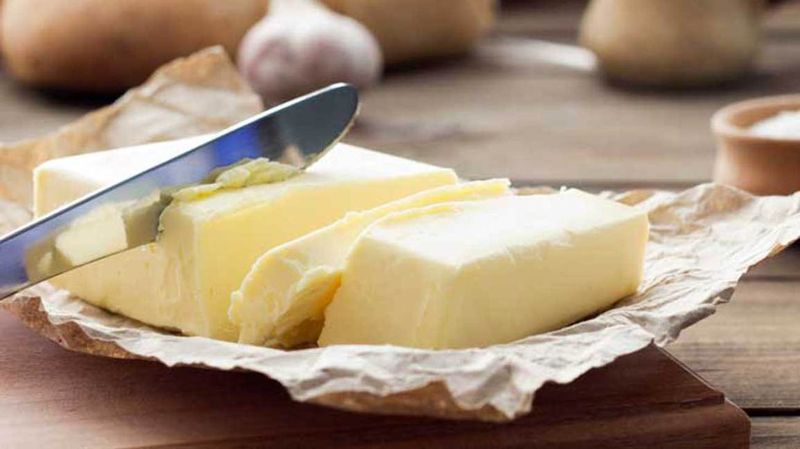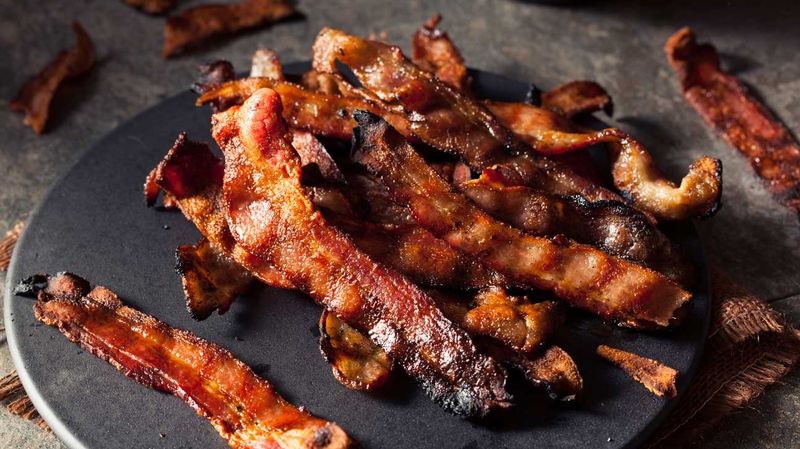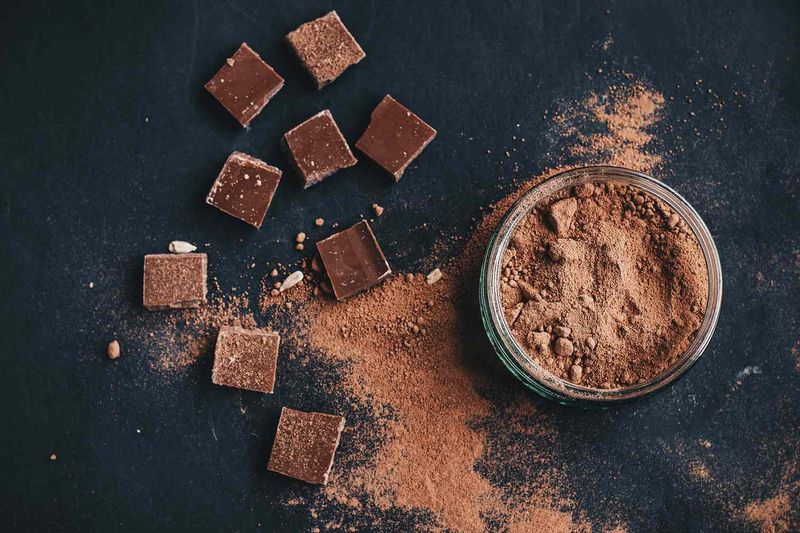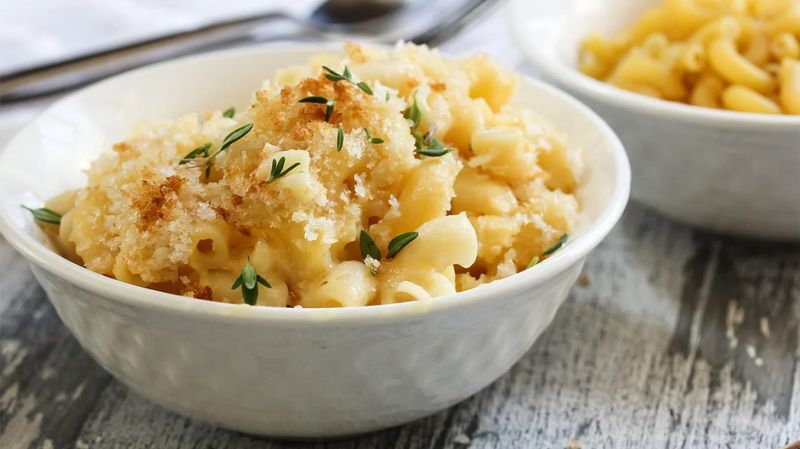Saturated fats, while tasty, can sneak into our diets without us realizing. These fats are known for raising cholesterol levels, which can lead to heart problems over time. Being informed about which common foods are high in saturated fats can help make healthier choices on your next grocery run. Here are 14 items that might be sneaking more saturated fats into your diet than you realize.
Cream Cheese

Every brunch enthusiast knows that no spread is quite complete without a dollop of cream cheese. Yet, lurking beneath its smooth texture is a hefty dose of saturated fats. This beloved breakfast staple can quickly turn a healthy meal into a caloric pitfall. Consider opting for low-fat versions or using it sparingly.
Did you know that cream cheese was first made in the U.S. in the late 1800s? Its rich history is as extensive as its creamy taste, making it a timeless favorite in households across America.
Butter

Butter, the star of many culinary dishes, carries a significant amount of saturated fat. Its silky texture and rich flavor make it hard to resist. However, it’s wise to be mindful of how much you’re using.
Some chefs swear by its ability to bring out the best in sauces and pastries, while nutritionists advise moderation. Diversifying your fats with alternatives like olive oil can balance taste and health.
Interestingly, butter has been used for centuries, tracing back to ancient times when it was a luxury item.
Bacon

Few things can rival the enticing smell of bacon sizzling on a Sunday morning. However, its crispy allure comes with a warning: bacon is notoriously high in saturated fats. While it adds that irresistible crunch, moderation is key.
Many health-conscious individuals look to turkey bacon as a lower-fat alternative, though some argue it’s no match for the real deal. Occasionally, allowing for indulgence can maintain a balanced diet.
Did you know that bacon dates back to ancient China, where the tradition of curing pork belly began?
Sausages

Sausages are a barbecue favorite, offering a burst of flavor in every bite. However, these meaty links often come packed with saturated fats. When indulging, it’s essential to pair them with salads or grilled veggies.
Choosing leaner versions, like chicken or turkey sausages, can help maintain a healthier diet. The myriad of flavors available ensures that there’s something for everyone.
Fun fact: sausages have been enjoyed since ancient Roman times, showcasing their timeless appeal in cuisines worldwide.
Heavy Cream

Adding heavy cream to coffee or desserts can transform them into decadent treats. However, this luscious addition brings a high saturated fat content that should be monitored.
Consider using lighter creams or milk alternatives for a healthier twist while preserving that creamy goodness. Heavy cream’s versatility in cooking makes it a staple in many kitchens but requires careful portioning.
Historically, heavy cream has been a symbol of luxury, often reserved for the wealthy in past centuries.
Cheddar Cheese

Cheddar, a favorite among cheese lovers, is known for its sharp taste and creamy texture. Yet, behind its deliciousness lies a significant amount of saturated fat.
It’s an excellent companion for wine and crackers, but those watching their cholesterol should be cautious. Opting for aged varieties might offer more flavor with smaller portions.
The origins of cheddar cheese date back to the English village of Cheddar in the 12th century, making it a historical delight.
Chocolate

Chocolate, whether dark or milk, is a beloved treat worldwide. Unfortunately, it can also be a significant source of saturated fats, depending on its cocoa content.
While it offers moments of pure joy, moderation ensures that the indulgence doesn’t weigh heavily on your health.
Some studies suggest that dark chocolate, with its higher cocoa content and antioxidants, might provide better health benefits compared to milk chocolate.
Interestingly, chocolate was once a treasured drink among the Aztec and Mayan civilizations.
Coconut Oil

Coconut oil is often hailed for its versatile uses, from cooking to skincare. However, it is also high in saturated fats. While some praise its unique properties, others urge caution.
Using it in moderation can harness its benefits without overloading on unhealthy fats. Consider its tropical taste and how it complements certain dishes.
Did you know coconut oil has been a staple in Asian and Pacific Islander diets for centuries? Its historical significance adds to its appeal today.
Pizza

Pizza, a universal comfort food, can often be laden with saturated fats, especially when topped with extra cheese and meats.
Choosing thinner crusts, lighter cheese, and veggie toppings can make a healthier meal without sacrificing taste. Pizza nights can still be fun with mindful choices.
Did you know that pizza, as we know it, originated from Naples in the late 18th century? Its journey from local delicacy to global favorite is a testament to its enduring allure.
Ice Cream

Ice cream brings joy to people of all ages, but it’s easy to overlook its high saturated fat content. Enjoy it as an occasional treat to keep your heart healthy.
With so many flavors and varieties, opting for low-fat or plant-based alternatives can be just as satisfying. Ice cream’s role as a comfort food is undeniable, offering creamy bliss in every scoop.
Fun fact: the earliest forms of ice cream can be traced back to the Persian Empire, where a chilled syrup dish was made.
Whipped Cream

Whipped cream is the cherry on top of any dessert, adding a light, airy texture that’s hard to resist. However, its cloud-like appearance can be misleading in terms of saturated fat.
Consider using whipped toppings made from plant-based alternatives for a healthier option. Its historical roots in European cuisine make it a timeless addition to sweets.
Did you know that whipped cream was once called “milk snow” in the 16th century? A whimsical name for a delightful treat.
Shortening

Shortening is a common ingredient in many baked goods, providing the desired flaky texture. Yet, it’s packed with saturated fats and should be used sparingly.
Exploring alternatives like butter or margarine can offer a similar texture with slightly less saturated fat. Baking with shortening may yield perfect pastries, but balance is key.
The invention of shortening dates back to the early 20th century, revolutionizing the baking industry with its consistency and shelf life.
Mac and Cheese

Mac and cheese is the epitome of comfort food, with its creamy, cheesy goodness. However, it’s often loaded with saturated fats due to the cheese and butter involved.
Opting for lighter recipes or incorporating vegetables can help balance this indulgent dish. Its nostalgic appeal makes it a favorite for many, reminding us of childhood meals.
Did you know that Thomas Jefferson is credited with popularizing mac and cheese in the United States?
Pastries

Pastries may tempt with their flaky crusts and sweet fillings, but they often contain high levels of saturated fats.
Enjoy them as an occasional treat, and consider recipes that use healthier fats or smaller portions. Their rich textures and flavors make them a bakery staple, enjoyed by many.
Fun fact: the art of pastry-making has deep roots in French cuisine, where precision and skill create masterpieces.
Leave a comment